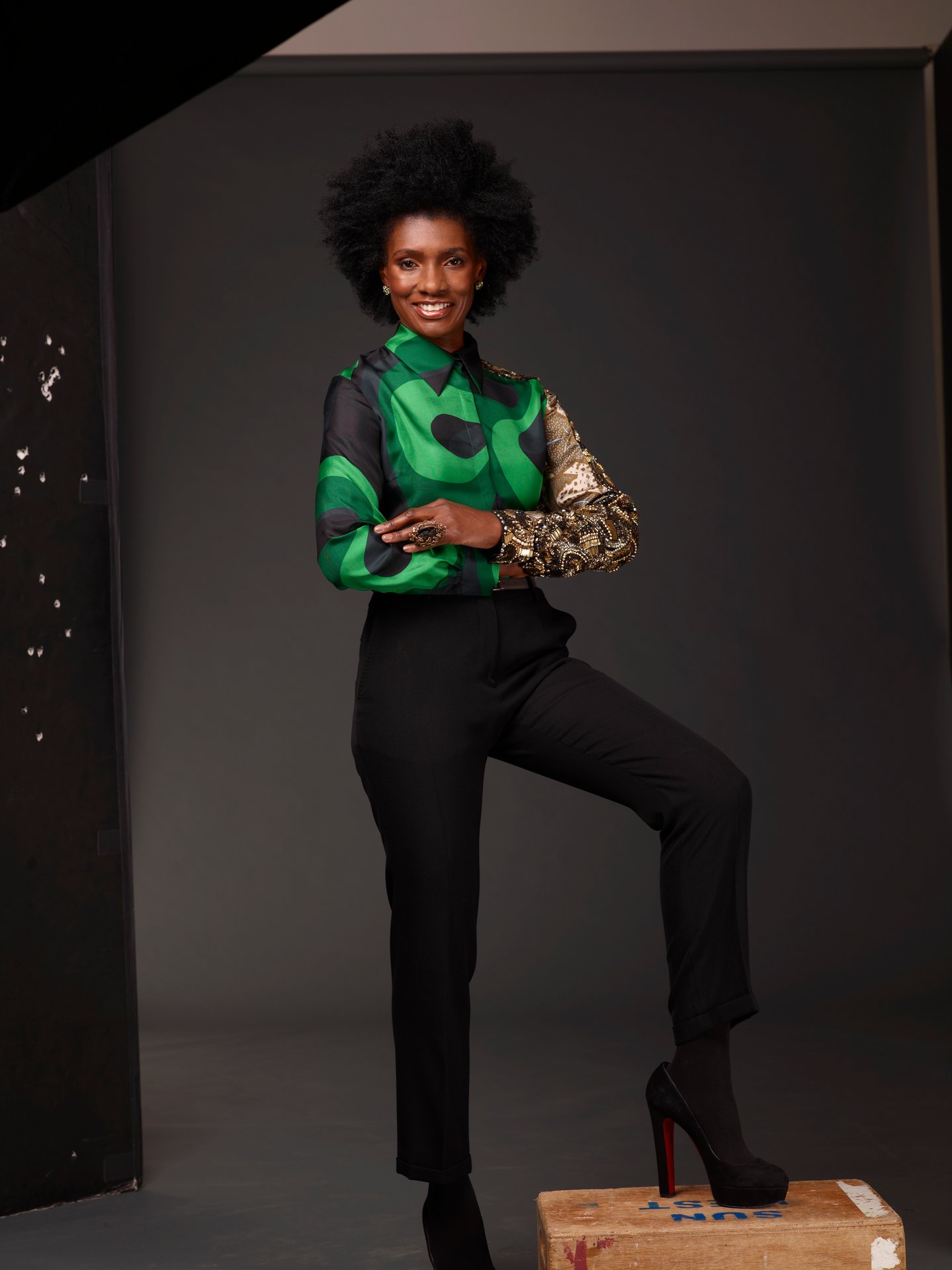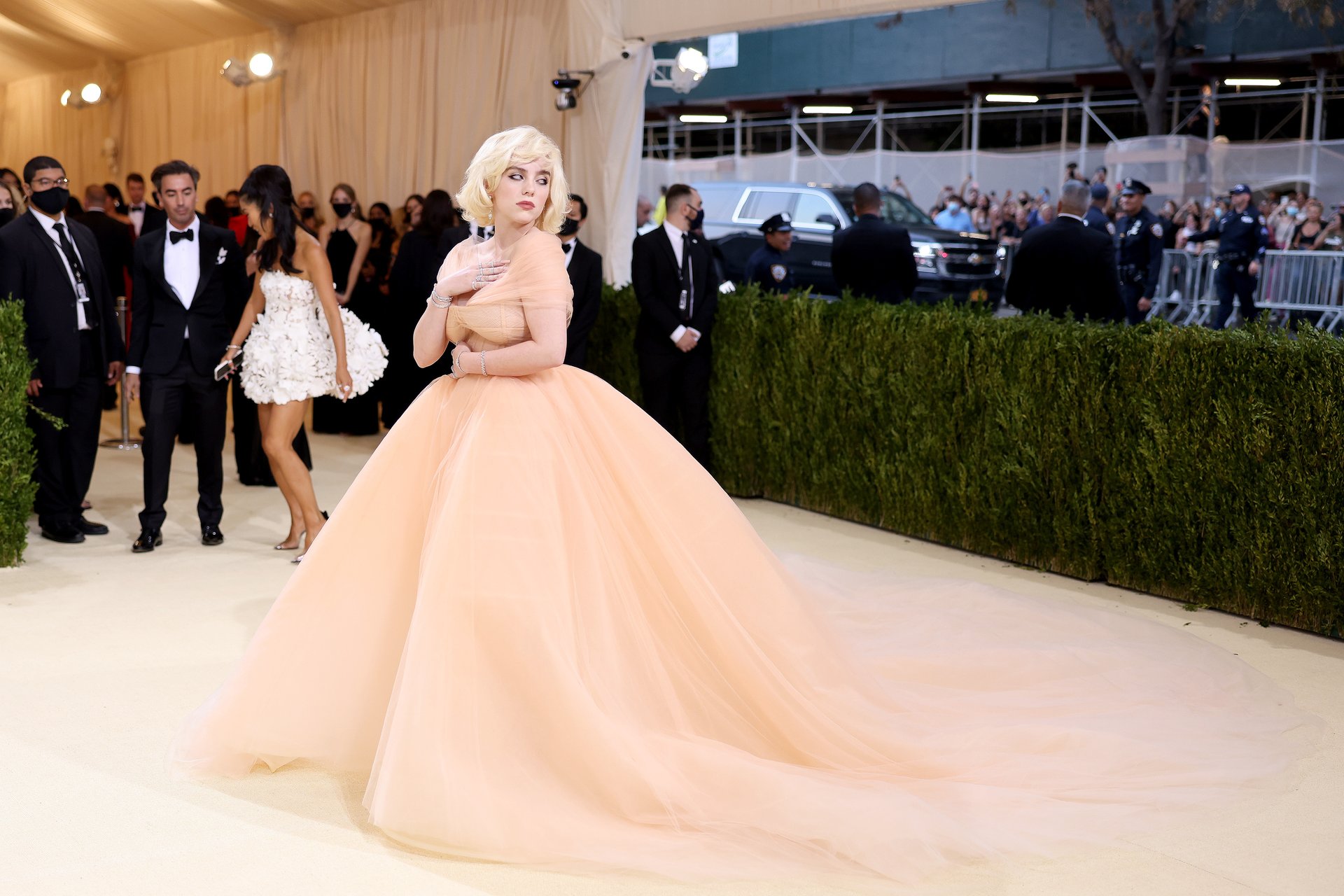Making My Mark: Constance C.R. White
September 13, 2021
Karyl J. Truesdale


“Fashion is a huge global business. We want to make sure Black people play an important role in it, and not only as consumers.”
Constance C.R. White once described New York Fashion Week as “business being done” on New York’s Power 105 Breakfast Club morning show. In time for the first IRL NYFW since March 2020, how befitting is it to speak to this award-winning industry veteran who understands and loves the business of this business we call fashion. Proprietor of a career with an enumeration of accolades, White has contributed her scrivener expertise to The New York Times, Elle, Essence and Ebay. Twice named by the New York Daily News, as one of the top 50 people in fashion, her contributions have played a significant role in the Black creative space and, very importantly, archiving Black people’s roles and contributions in those same spaces. The multi-talented visionary has authored two books, Style Noir and How to Slay, the latter of which is also the title of her podcast in partnership with Univision.
White is also currently a consulting editor for Silicon Valley start-up and modern media company Ozy.com, and has plans to take her accomplishments to the big screen.
The scene is 1990s New York City. Bryant Park was alive; Bill Cunningham was in the streets, Hip hop was at its peak. The club scene was crazy, Wall Street was booming, and your first book Style Noir was published, in 1998. Summon that moment in time, please.
It was a really exciting fertile time. The Hip hop influence on fashion was huge. We started using the term “urban” – it was introduced into fashion and that indicated two things; one, the incredible influence that Black youth and culture were having on fashion, and two: how fashion was not embracing or crediting Black people’s contribution to fashion. It was a time when names like Donna Karan, Calvin Klein, and Ralph Lauren were major players. Fashion was very much the insular club that a lot of people know it to be – and one of the reasons I wrote Style Noir at that time was in part due to the incredible influence I’d witnessed from Hip hop and from Black people. As I sat front row at the shows in New York, Milan and Paris, I bore witness to the influence and it was perplexing to me that no one was talking about it.
Journalists are known for asking the why, when, and how to their subject matter. Ms. Constance C.R. White… why, when, and how did you know this would be your life’s orbit?
“When did I know” is probably the easiest to answer. It’s when I was working at Women’s Wear Daily. Prior to fashion, I thought my journey would take me into music journalism as I had dabbled in music for a little while. WWD uncovered all these worlds to me that I truly enjoyed, so I didn’t miss the music industry as much as I thought I would. Fashion began to evolve as a part of the entertainment business, just as sports morphed into entertainment. Each industry collided and it was all-encompassing. Some people call fashion an “applied art,” so hence, my “why” defines why it has engaged me all these years. For me, it is the perfect balance of the business of fashion and art. Every day, you are involved in a business that touches every person’s life, but, at the same time, it is very much an art. Being involved in fashion as much as I have been, I’m very much emerged in an art form. I’ve learned so much about artists from designers – when interviewing them about a collection or by wanting to research something that was referenced in a collection. When the red carpet emerged, fashion became very much about the celebrity. Their brands and wealth are largely in part due to how they influence style and their interactions with the world of style. The “why” for me is about how fashion can engage both sides of me. I find it endlessly fascinating when you look at it as a whole. And… not to mention, fashion is also a cultural driver.
Tell me about a time in your career where you deemed it necessary as a journalist to break the rules and alter a standard procedure to get your point across.
I did a story for The New York Times about hip hop. I turned it in to my editor, the brilliant Claudia Payne, and after editing it, she in turn turned it over to the copy desk. This was standard procedure. The copy desk called me over when they were ready and had some questions. As I led into the story, I spoke about the incomparable Ms. Lauryn Hill. They changed what I wrote, but I didn’t back down. I referenced her as “The singer Lauryn Hill” and was met with strong opposition. I was told “It wasn’t like this was Barbara Streisand, you must explain who this Lauryn Hill is.” So, we got into this back and forth and it was very dismissive. It was using their paradigms and in this case, they were wrong. You are working at the copy desk at The New York Times in the 1990s and do not know who Lauryn Hill is? Are you kidding me? You have to explain who Lauryn Hill is to a New York Times reader? Everyone knew who Lauryn Hill was and still IS. We’re in a moment of big change right now, and there are two kinds of change. There is change from the inside out and change from the outside in – and what — seemed like a small thing to them was a huge thing for me. There needs to be a paradigm shift. Every Black woman who reads your paper and every young person under 30 knows who Lauryn Hill is! And for you to act like she doesn’t matter the way that she matters…was something I had to push back on. Most of the times it is the little things.
Another occurrence was when I used to attend the shows, and particularly in Paris, I would often run into the Essence Magazine girls. They were there to cover, and one of them was Mikki Taylor. On quite a few of the occasions, they were not allowed entry into the show, and this was stepping outside of what the rules were. Because I was representing a very powerful organization, I would always say: “Come in with me,” and I would explain to the PR person who they were if someone tried to stop us. I’m explaining, “You know Glamour, you know Vogue, well this is Essence, and it’s a major American women’s magazine. I know that you would want them at the show, and I am sure that this is an oversight. They’re coming with me, and if you have a seat, we truly appreciate it; if not, we understand as this is happening in the moment.” I appreciate and respect what PR people must do – but at that moment, I was looking out for my fellow Black journalist cohorts. They needed them to come in and cover the show!
Was your Rizzoli book How to Slay: Inspiration from the Kings and Queens of Black Style birthed out of necessity or was it a passion?
A passion for sure! Look, unless you’re Terry McMillan or Stephen King, you do not get rich writing a book. I always wanted to create a coffee table book that celebrated Black style. I had held back for 20 years from the publishing of Style Noir. I was very happy with Rizzoli and everyone else who helped make it happen. I’m so proud of it; it was so thrilling and such hard work.
If you could throw a party and invite all your favorite literary icons alive and deceased, who would be on your guest list?
Oh my gosh!!! This is not the final list but Toni Morrison of course. The Bluest Eye is just an amazing work and had a huge influence on me. James Baldwin…amazing, and I love the work of Eudora Welty. Reading is my passion and my biggest hobby!
As an esteemed journalist and editorial phenom, do you have more work to uncover, and what legacy would you like to leave behind?
I absolutely have more work to uncover. I want to take the work that I began with Style Noir and How to Slay to the screen. I think that’s a must! I want to do more books and make sure there’s a record of everything that Black people contributed and are contributing to style — whether it’s by writing stories, bringing it to the screen or more books, I want to do it! For Style Noir I did quite a bit of research on several Black designers upon whose shoulders today’s incredible Black designers stand; designers like Alvin Bell, Constance Saunders, Scott Barrie, Stephen Burrows…names like that are unsung, but helped build Seventh Avenue. Urban fashion style legends from April Walker to Tony Shellman to Daymond John who are all in my book, and more of them who are not … so, I want to keep archiving that. My bigger purpose is to insure Black people’s contribution to style is brought to the forefront. Rather than appropriating, not crediting, not acknowledging, and barriers going up higher for some groups of people that for others, let’s understand what the journey has been and acknowledge it for all groups.
I also do not want to leave out my Black media! Black media has been absolutely fantastic about helping to bring to the center the work of all designers and the work of Black designers – people like Teri Agins and Robin Givhan as well as Walter Greene, who is not well known but has been in the trenches forever. The list is significant and needs to be acknowledged. We want to make sure Black people play an important role in this industry. As consumers and cultural drivers, the contribution is huge and we need to get back financing, economic power, and credit as much as we’ve put in. I want to continue to inform and broaden philosophies as I move forward in this business.
May you illustrate yourself in one word?
Oh my goodness! Whoo! You ask tough, provocative questions, Karyl! Kind. I love the simplicity of that word. It’s important to be kind. It covers equality, it covers justice, it covers ambition, and how you show up in the world. It’s hard to pick one word but kind also relates back to my legacy. We all have many values that we can live out in our career, but you don’t have to live out all your values in your career! At the end of the day, when I’m in my rocking chair, what’s really important? There are many ways I can live creativity, I can live Afrocentricity, I can live women’s empowerment…all these things are important to me and have shown up in my career, but you can do that in many different spheres. But I think the essential thing in every way is to be kind to people, and to be kind to yourself.
PHOTOS BY ITAYSHA JORDAN

